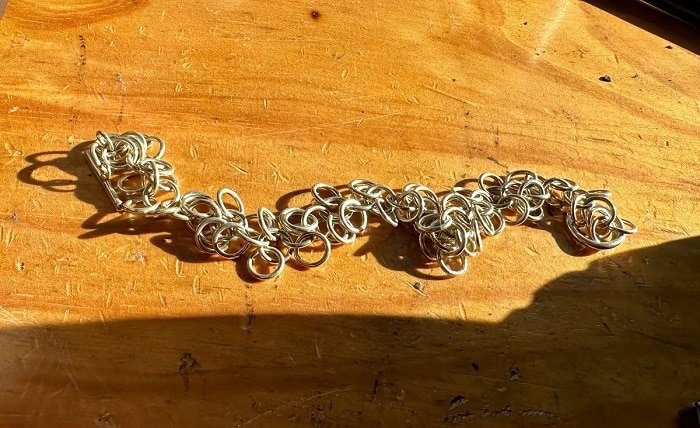
The Enchanting Art of Chainmaking: Unveiling the World of a Chainiste
In the realm of jewelry, intricate chains stand as a testament to human ingenuity and artistry. Each delicate link, meticulously crafted and interlinked, forms a mesmerizing pattern that adorns necks, wrists, and ankles. Behind these captivating creations lie the skilled hands of chainistes, artisans who dedicate their lives to mastering the art of chainmaking.
A Glimpse into the History of Chainmaking
The origins of chainmaking can be traced back to ancient civilizations, with evidence of chains discovered in Egyptian tombs dating back to 3000 BC. Over the centuries, the art evolved, with artisans across cultures refining techniques and developing new designs. In medieval Europe, chainmaking flourished, particularly in Italy, where goldsmiths created elaborate chains for both adornment and practical purposes.
The Tools and Techniques of a Chainiste
A chainiste’s workshop is a symphony of specialized tools, each designed to perform a specific task with precision. Drawplates, with their meticulously aligned holes, guide the wire as it is drawn down to the desired thickness. Pliers, in various shapes and sizes, grip and manipulate the wire, while anvils provide a sturdy surface for hammering and shaping.
The chainmaking process itself is a mesmerizing dance of hand and tool. The chainiste begins by drawing the wire through the drawplate, gradually reducing its diameter until it reaches the desired thickness. Next, the wire is cut into individual links, each one meticulously shaped and sized. The links are then assembled, one by one, using a variety of techniques, such as soldering, brazing, or weaving.
The Varieties of Chains
The world of chainmaking encompasses a vast array of designs, each with its own unique characteristics. Some of the most well-known chains include:
- Curb chain: A classic and versatile chain, characterized by its interlocking oval links.
- Rolo chain: A sophisticated chain with flat, interlocking links that create a smooth, fluid appearance.
- Box chain: A sturdy chain with square or rectangular links that offer a bold, geometric look.
- Snake chain: A flexible chain with interlocking links that glide smoothly against the skin.
- Figaro chain: An elegant chain that alternates between elongated and round links, creating a rhythmic pattern.
The Enduring Legacy of Chainmaking
In a world increasingly dominated by mass production, chainmaking remains an art form deeply rooted in tradition and craftsmanship. Each chain crafted by a chainiste carries the imprint of their skill, patience, and passion. These exquisite creations are not merely adornments; they are tangible expressions of human artistry and ingenuity.
FAQ
Q: What is the difference between a chainiste and a jeweler?
A: While both chainistes and jewelers work with precious metals, chainistes specialize in the creation of chains, while jewelers have a broader scope of expertise, encompassing a wide range of jewelry items.
Q: How long does it take to become a skilled chainiste?
A: Mastering the art of chainmaking requires years of dedication and practice. Apprentices typically work under the guidance of experienced chainistes for several years before gaining the skills and knowledge to independently create intricate chains.
Q: Where can I find chainiste-made jewelry?
A: Chainiste-made jewelry can be found at specialty jewelry stores, craft fairs, and online retailers. You may also be able to find chainistes who offer custom-made jewelry services.
Conclusion
The art of chainmaking is a captivating blend of tradition, craftsmanship, and artistry. Each chain, meticulously crafted by a skilled chainiste, is a testament to human ingenuity and the enduring beauty of handmade creations. As we appreciate the delicate links and intricate patterns of these adornments, we also recognize the passion and skill that lie behind their creation.




